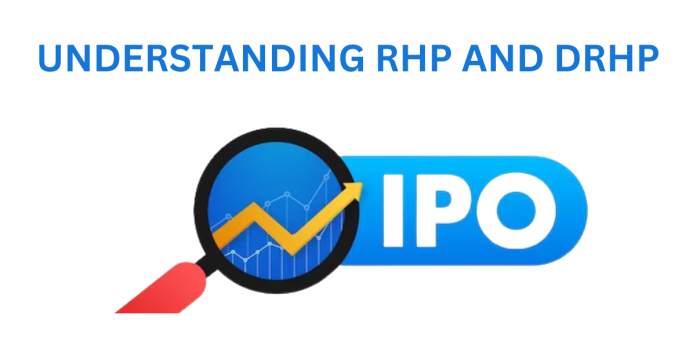When a company decides to go public and offer its shares to the general public, it is required to prepare a set of documents to provide potential investors with all the necessary information to make an informed investment decision. Two key documents in this process are the Red Herring Prospectus (RHP) and the Draft Red Herring Prospectus (DRHP). In this blog, we will explore what RHP and DRHP are, their significance, and how they are crucial in the initial public offering (IPO) process.
What is an IPO?
An Initial Public Offering (IPO) is the process through which a privately held company becomes a publicly traded company by issuing shares to the general public. This allows the company to raise capital from investors and provides them with the opportunity to buy and sell shares of the company on a stock exchange.
Red Herring Prospectus (RHP)
The Red Herring Prospectus (RHP) is a legal document filed with the market regulator, typically the Securities and Exchange Board of India (SEBI) in India, and other relevant authorities in different countries. The RHP contains detailed information about the company’s business, its financials, the planned use of funds raised through the IPO, and any potential risks involved. The term “red herring” indicates that the document is a preliminary prospectus and that some details, such as the IPO price, are yet to be finalized.
The RHP typically includes
Company’s history, business operations, and financial performance, objectives of the issue (how the company plans to use the funds raised), risk factors associated with the investment, management and promoter details, legal and regulatory information, capital structure and shareholding pattern, terms and conditions of the IPO and any other relevant information that investors should know.
- Purpose: The RHP is not meant for direct public circulation but is used by the regulatory authorities to review and approve the IPO. Once approved, the company issues a public advertisement (often called an “IPO Red Herring Prospectus”) to inform potential investors about the upcoming IPO.
- Confidential Information: Companies often include confidential financial information, such as the issue price and the number of shares to be issued, in a separate sealed envelope attached to the RHP, which is opened only after regulatory approval.
Draft Red Herring Prospectus (DRHP)
The Draft Red Herring Prospectus (DRHP) is a preliminary version of the RHP, which is filed with the regulatory authorities and stock exchanges for their review and feedback before the final RHP is prepared. In essence, it is a step in the IPO preparation process and serves as a starting point for discussions and revisions.
- Contents: The DRHP generally contains most of the information found in the final RHP. However, it may not contain some specific details that are yet to be determined, such as the final issue price and the number of shares to be issued.
- Purpose: The DRHP allows regulatory authorities and stock exchanges to review the company’s IPO proposal before it is presented to the public. This process helps in identifying and addressing any discrepancies or concerns in the initial documents.
- Revisions: Based on the feedback received during the regulatory review process, the company may make necessary revisions to the DRHP to align it with regulatory requirements and investor protection standards. Once the regulatory authorities are satisfied, the DRHP is converted into the RHP, and the IPO can move forward.
Read: Mainboard IPO Vs SME IPO
Key Differences Between RHP and DRHP
- Status: RHP is the final prospectus issued to the public, while DRHP is a preliminary version that undergoes regulatory review.
- Availability: RHP is accessible to the general public, while DRHP is primarily for regulatory and stock exchange review.
- Completeness: RHP contains all finalized details of the IPO, while DRHP may lack certain specifics.
- Confidential Information: RHP often contains sealed envelopes with confidential data, while DRHP does not.
Conclusion
In the IPO process, the Red Herring Prospectus (RHP) and the Draft Red Herring Prospectus (DRHP) are critical documents that provide transparency and information to potential investors. While the RHP serves as the final document for public information, the DRHP is an essential step in the IPO preparation, allowing for regulatory review and feedback. These documents play a vital role in ensuring that investors have the necessary information to make informed decisions and in maintaining the integrity of the IPO process. Companies, regulatory authorities, and investors all benefit from the comprehensive and transparent nature of these prospectuses.
Disclaimer: This blog has been written exclusively for educational purposes. The securities mentioned are only examples and not recommendations. It is based on several secondary sources on the internet and is subject to changes. Please consult an expert before making related decisions.


